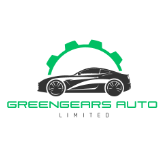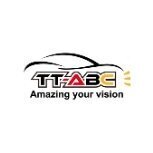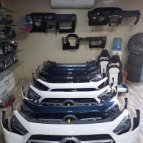-
Welcome to Auto Parts Forum
Whether you are a veteran automotive parts guru or just someone looking for some quick auto parts advice, register today and start a new topic in our forum. Registration is free and you can even sign up with social network platforms such as Facebook, X, and LinkedIn.
-
Similar Content
-
Understanding Auto Spare Parts: The Backbone of Vehicle Maintenance
By Muhammad,
- auto parts
- automotive
- (and 3 more)
- 0 replies
- 280 views
-
- 0 replies
- 342 views
-
- 0 replies
- 282 views
-
TT-ABC is an online car headlight and taillight shopping store. We are manufacturer direct sales
By TT-ABC,
- headlight
- tail lights
- (and 6 more)
- 0 replies
- 412 views
-
- 0 replies
- 1,068 views
-
-
Similar Topics
-
By abenleulmi
The thermostat is a crucial component in your car's engine system, playing a vital role in regulating the engine temperature. Contrary to common beliefs, removing your car's thermostat can lead to severe consequences, affecting fuel efficiency and engine lifespan. In this article, we will explore the benefits of retaining the thermostat and explain why removing it should be avoided. link hidden, please login to view -
By Counterman
Stellantis celebrated a major milestone with the opening of its new Mopar Parts Distribution Center (PDC) in East Fishkill, New York. The $64 million facility enhances parts distribution across the Northeast and supports both dealers and customers.
Leadership and Community Support
Mopar leaders and a Dutchess County legislator spoke to state officials,
link hidden, please login to view partners, UAW leaders and employees. They emphasized the new facility’s impact on customer service in the local community. Commitment to Growth and Service
“The launch of our new Mopar Parts Distribution Center in East Fishkill marks a significant investment in our long-term growth and service capabilities,” said Mopar Senior Vice President for North America Darren Bradshaw. “This facility supports our dedicated UAW-represented workforce with the tools and environment they need to succeed. By integrating cutting-edge technology and automation, we’re strengthening our supply chain, accelerating delivery times and reinforcing our commitment to dealer and customer satisfaction along with employee success.”
Mopar Parts Distribution Center Capacity and Strategic Positioning
The 534,000-sq.-ft. facility is strategically located to serve dealerships and customers across the Northeast. It houses over 46,000 unique parts and expects to process more than 2 million shipments each year.
Boosting Local Economy and Infrastructure
“The launch of the Mopar Parts Distribution Center is a tremendous boost for East Fishkill,” said Dutchess County Legislator Steve Caswell. “This facility is not just an investment in infrastructure, but in our people, our businesses and our future. Stellantis’ decision to bring this advanced distribution center and nearly 100 jobs to our community underscores our town’s potential as a growing hub for technological and economic development.”
Introducing Next-Generation AutoStore Technology
This Mopar PDC is
link hidden, please login to view’ first U.S. facility using the AutoStore automated storage and retrieval system. AutoStore includes 40 robotic units using advanced technology to move along a grid above stored parts. They retrieve parts from 70,000 bins across 18,000 square feet and deliver them to processing stations. PDC employees then prepare the final shipments for distribution. Enhancing Efficiency and Inventory Management
AutoStore automation boosts speed, accuracy and dependability of order completion. It also reduces the warehouse footprint needed for storing inventory.
Sustainability and the Mopar Parts Distribution Center
The East Fishkill Mopar Parts Distribution Center is one of 21 Mopar facilities in North America serving dealers and aftermarket customers. Mopar merged the Tappan and Boston PDCs to reduce the region’s storage footprint. The AutoStore system further decreases the physical space needed at the new East Fishkill location. These efforts support Stellantis’ broader goal of lowering carbon emissions.
The post
link hidden, please login to view appeared first on link hidden, please login to view.
link hidden, please login to view -
By Counterman
Research by Carfax shows the used car market surging in both value and volume. The automotive aftermarket is positioned to benefit significantly—and among those who understand it best is
link hidden, please login to view, president of link hidden, please login to view (APA). In an industry where profitability is boosted by the number of repairable vehicles on the road, the recent upswing in used car sales is providing tailwinds that aftermarket businesses are ready to ride. “An increase in used car sales as well as an increased valuation of those cars both have huge benefits for our business,” Tucker explains. “With more vehicles on the road in that sweet spot of being 4-12 years old, our opportunity for selling parts increases exponentially.”
That “sweet spot” Tucker refers to is the prime range for aftermarket demand. These vehicles are typically out of warranty, increasingly in need of maintenance and repair, and owned by drivers more likely to invest in keeping them roadworthy—especially when used car values are holding strong. It’s a powerful combination that leads to increased part sales, especially in high-failure-rate categories.
Data is the Differentiator
According to Tucker, the key to capitalizing on this growing opportunity lies in one word: data.
“Keeping track of what we need to have on the shelf to service this aging car parc is the number one driver in capitalizing on servicing these vehicles,” he says. “Also understanding how the types of repairs change as the vehicle ages is important. Here again, data is the driver to success.”
From stocking the right parts for the right model years to understanding when customers shift from premium to value-tier products, every decision aftermarket businesses make should be rooted in understanding vehicle age trends and consumer vehicle repair behavior. “Understanding the brands and price points that change as the vehicle ages also must be top of mind,” he adds.
Growth For Established Players
With used car sales rising sharply, some might foresee a flood of new players entering the aftermarket to capitalize on that replacement parts demand. But Tucker doesn’t see it playing out that way.
“Having an aging car parc also means expanding your inventory in order to cover those additional model years adequately,” he says. “Having inventory dollars invested in the right places is not something that happens overnight, and so new entrants into this space are few and far between.”
Instead, he anticipates new investments going into existing aftermarket businesses. The industry’s resilience—especially during economic uncertainty—continues to attract capital. “I won’t ever say we are recession-proof as an industry, but we are recession-resistant,” Tucker notes. “Our space has proven to be an attractive one for investors and I don’t see that changing.”
Vehicle Categories for Strong Sales
While aging vehicles generally mean more part sales overall, Tucker is quick to point out that those sales fluctuate based on a variety of factors: vehicle miles driven, car parc composition and failure rates.
“When you take all of those into account, we see categories such as brakes, ride control and chassis all having exponential growth,” he says. “Anything the vehicle must have to start, run and stop effectively are all areas of strong growth.”
And as used car values rise, owners are more inclined to authorize discretionary repairs, reversing a trend often seen in older vehicles. “We will also see more of those discretionary repairs come into play on older vehicles as their value holds strong and steady,” Tucker adds.
The post
link hidden, please login to view appeared first on link hidden, please login to view.
link hidden, please login to view -
By Counterman
RBR Truck Parts, with three locations in Texas, recently joined
link hidden, please login to view. Founded in 2018, RBR Truck Parts LLC is a heavy-duty parts distributor serving the Dallas/Fort Worth metroplex. The company provides aftermarket parts for all truck makes and models. RBR caters to owner-operators, local fleets, service centers and municipal accounts. It offers high-quality products to keep their customers’ vehicles running efficiently. Strategic Location in a Major Trucking Hub
The Dallas/Fort Worth metroplex is home to 8.5 million people across more than 200 cities. It is a major hub for the trucking industry. RBR’s Hutchins, Texas, location sits near Interstate 45, just 250 miles north of Houston. Houston ranks among the nation’s largest ports. RBR also operates near a large rail/container yard and major warehouse operations. This allows the company to serve the region’s trucking needs effectively. Its heavy-duty network connection strengthens its position in this critical market.
Product Selection and Facilities Support Growth
RBR serves a diverse customer base throughout North Central Texas. The company stocks a wide selection of aftermarket truck parts. These include engine components, suspension parts, brake systems, wheels and tires, filters, fluids and accessories. The Hutchins location includes a 14,000-sq.-ft. showroom and warehouse. A 5,000-sq.-ft. facility in Duncanville and a 7,000–sq.-ft. branch in Fort Worth support operations. Owner Rony Santos and general manager Cesar Perez lead the RBR team.
Partnering with Power Heavy Duty for Continued Success
“RBR Truck Parts is a well-established business known for honesty, integrity, and their strong ties in the community,” said Jim Pennig, vice president of business development,
link hidden, please login to view Heavy Duty Family of Companies. “They are dedicated to growing their business with quality parts from Power Heavy Duty’s network of supplier partners, and we look forward to supporting them with great programs and true group value.”
The post
link hidden, please login to view appeared first on link hidden, please login to view.
link hidden, please login to view -
-
By WiperTech008
When Should You Replace Your Wiper Blades?
Wiper blades keep your windshield clear, but since they’re made of rubber, they wear out with time and need to be swapped out regularly. How long they last really depends on how often you use them, where you drive, and whether you take care of them. Watch for these signs that indicate it's time for new wipers:
Streaking or Noise
Notice streaks or that awful squeaking sound? Yep, it’s probably time for a new pair. For a temporary fix, clean the blades with vinegar or alcohol, but replace them as soon as possible.
Visible Damage
Check the rubber blades regularly for cracks, chips, or deformities. Any damage means it's time for new wipers.
Age Considerations
Standard wipers typically last 6-12 months
High-quality blades with proper care can last 2+ years
Frequent use or harsh conditions (sun exposure, dry wiping) may require replacement every 6 months
Just a heads-up—if your car sits in the sun a lot or you use your wipers all the time, it’s smart to check them more often.
-








Recommended Posts
Join the conversation
You can post now and register later. If you have an account, sign in now to post with your account.
Note: Your post will require moderator approval before it will be visible.